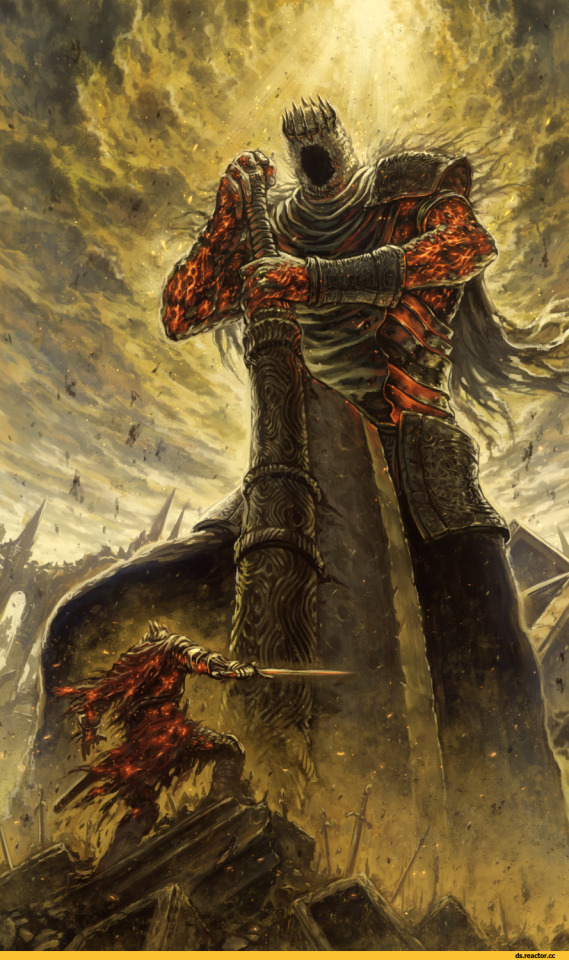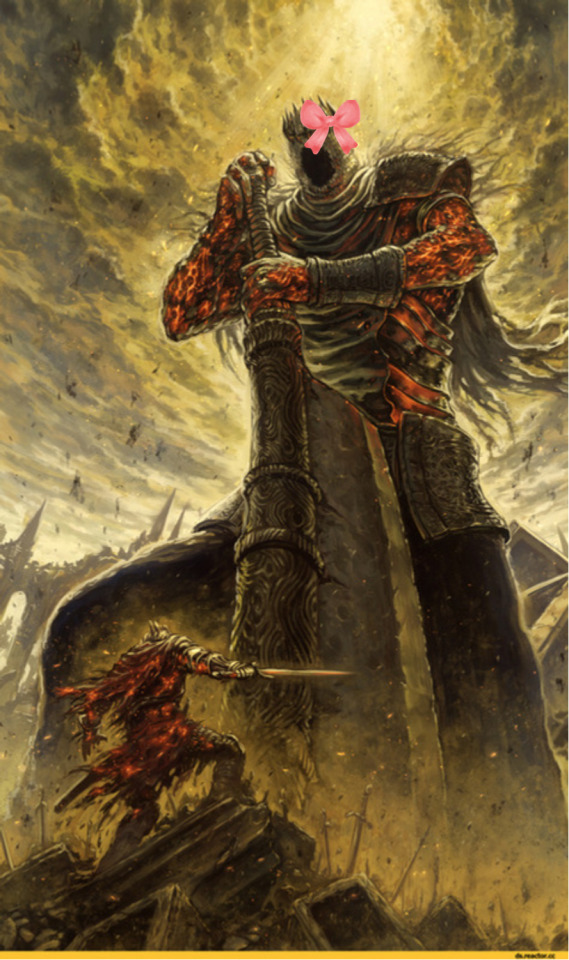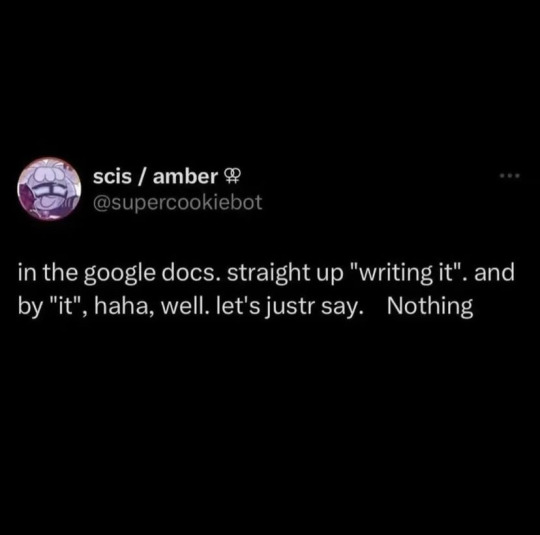#writing tings
Text
otp in denial about their feelings prompts:
<3 can somebody fkcng write all this and tag me im losing my mindnsna> anyways, feel free to usee, credits are appreciated !!
"im suprised, hurt and confused. you need me so badly at your side but you cannot figure out what you feel for me? hilarious."
"i know this is foolish. i know I AM. but i keep wanting you, why can't you understand that?" "You want me. but you don't want us."
"i tear my heart out to you and you're just throwing it away. wow.". "i didnt..."
"no please, all you do is push me away, [name]. I'm done. Whatever this is, it's done."
"I'm sorry, i dont feel the same... way." "look me in the eye and tell that, please. I'll..."
"I'm TRYING okay? fuck my feelings, it's fucked but one thing that I'll always be sure about is my love for you. I fucking love you and i don't fucking know how to act around you. Okay? I--" and they kiss. breathless short one, followed by a glance and a passionate one AHHHHSKXNSJ
"it took you three words to tell me how you felt. but im sorry it took me three eternities to tell you"
"I'll wait my entire lifetime for you, my love"
#otp prompts#otp writing#otp things#otp meme#otp ideas#otp dialogue#romance prompts writing#imagine your otp#writing ideas#writing prompts#romance writing#writing romamce#writing tings#writing prompt#writing drabble#drabble ideas#otp drabble prompts#writeblr#writers of tumblr#romance tropes#writer prompts#gestures that shows love#angsty dialouge prompts#urfriendlywriter#the last two prompts!!!! PLEASE SOMEBODY WRITE ITTTT#writing#prompts#writing inspo#writing inspiration#last two prompts plsplsplspls
2K notes
·
View notes
Text
Remember when that light skin weirdo (Drake) was like:
“I wasn't hiding my kid from the world, I was hiding the world from my kid.”
What if Lewis did the same thing? 🤔
#fanfic inspo#emjayewrites#sir lewis hamilton#lewis hamilton#writing inspo#writing tings#formula one fanfiction#f1 fanfic#lewis hamilton fanfic#Lewis Hamilton fanfiction
128 notes
·
View notes
Text
tips i learned as a 4yr writer . . . 📝

i.) don’t delete your drafts. just don’t, your motivation will thank you for your patience.
ii.) write what you’re thinking first, go back and revise/edit later.
iii.) writing is a very LONG process. have mercy on yourself, it will come when the time is ‘write’.
iv.) don’t be afraid to ask for help. sometimes, just a little more perspective can add that final piece of the puzzle.
v.) sit on it. you see it, just sit on it. even if it’s not a complete idea, just write it down and sit on it for a bit.
vi.) find your zone. do you write best during the day or night? cold or warm? phone or laptop? home or the small cafe up the street?
vii.) make use of your resources. look up those synonyms and different ways to phrase something.
viii.) understand what makes you a writer. it’s not about how fast you can dish out a chapter, and it’s not about how many words you can write. It’s about how much passion and effort you put into these stories, these tales, these alternate worlds outside of our own.
ix.) if it’s open to you, take a writing class. (if you can, meet the teacher prior to the class… sometimes teachers can be mood killers for classes with great potential.)
x.) learn to appreciate the internet. yes, it can be corrupting, but try to focus on the informative properties and the other positives!
xi.) don’t punish yourself because you haven’t written anything or made progress in x amount of days. the brain is functioning to keep you healthy.. so sometimes, writing isn’t what you need in that moment.
feel free to reblog / repost with more !! I hope these tips help you as they’ve carried me for four years. if you have any tips to share, I would love to listen.
#writing#writers#original writing#writing tips#writing tings#writing time#writeblr#writers on tumblr#writer problems#writerscommunity#writers and poets#writer stuff#mental health#mentalheathawareness#tips#hobby tips#positive mental attitude#writers block#writersmentalhealth
40 notes
·
View notes
Text
I have so much inspiration to write right now but I’m not awake enough for my brain to function properly. Send help.
#writing tings#regulus black#marauders#james potter#sirius black#jegulus#starchaser#sunseeker#black brothers#remus lupin#fic: don’t blame me
32 notes
·
View notes
Text


Canon Antagonist vs. Fanfic Antagonist
#this is sukuna 100%#writing sukuna in my fanfic lowkey made me forget how evil he is in canon#sukuna in cg is just an eepy guy#trying to get better#canon sukuna is NOT#jjk#jujutsu kaisen#cursed guardians fic#ryomen sukuna#writing tings
20 notes
·
View notes
Text
Here are 5 practical tips you can apply right away.
1.Choose active voice and vivid verbs. Passive voice, or leaving the subject out of the sentence, makes it look like you are trying to avoid responsibility. For example, instead of “the ball was thrown,” write “he threw the ball.” Whenever possible, avoid the “to be” verb (is, are, am, was, were). Instead of saying “he was running the meeting with an iron fist,” say “he ran the meeting with an iron fist.” Instead of “Bill is a great employee,” try “Bill works exceptionally well on a team.”
2.Choose precise words. All writing is made up of words. Doh! you may say, of course it is. To keep your writing short and to the point, use specific words. For example, rather than “several people,” use “three people.” Did you notice the title of this article? Instead of just saying “Tips to Make Your Writing More Exciting,” we’ve said, “5 Tips ….” Using numbers draws attention and gives the reader a “specific” path to follow.
3.Choose concise phrasing. Instead of “don't have the resources,” use “lack the resources.” Change “in view of the fact that” to “because.” Rather than “at the conclusion of the meeting,” write “following the meeting.” Shorter phrases make your writing easier to read and more interesting; longer phrases, while technically accurate, muddy up your writing.
4.Choose simple words. Trying to impress people with big words and complex sentences leads to ineffective writing. Avoid words like “utilize” rather than “use,” “ascertain” rather than “find out.” Exciting writing is focused and simple.
5.Choose appropriate words. If you write a technical piece for a publication, client, or colleague, you may choose to use jargon, acronyms, and industry-speak the intended audience naturally understands. When writing a note to a roommate or friend, you may choose to use slang or ultra-casual language. Either way, the reader needs to intuitively understand your point without asking questions or using Wikipedia to figure out what you’re trying to say.
The best way to improve your writing, whether you like to write or not, is to pay attention! While that may sound overly simple, it’s true. Spend time reading and reviewing your work, even if it’s a simple email. Make sure you’ve used clear and concise words, and that you’ve stopped writing when you’ve made your point.
Word choice can showcase your knowledge and education … or make you look juvenile and amateur. As Mark Twain said: The difference between the right word and the almost right word is the difference between lightning and a lightning bug 🐛 🐞🐜🦟🪲🪳🕷️
#book things#bookish quotes#teen writer#wattpad#writing#writing tings#poly prompts#otp prompts#writing tips#60s
21 notes
·
View notes
Text
Writing tip:
Be succinct while creating content.
Don't elaborate excessively.
It will lessen your content punchiness.
#writingforlife#writing community#creative writing#writinglove#writerslift#writers and poets#writers of tumblr#writerscommunity#writing tips#writing#writers block#writings#writer#writers on tumblr#writeblr#blog writing#writing tings#writerslife#writers problems#words words words
52 notes
·
View notes
Text
I can't cope, Matpat is retiring!!!!
My literal childhood hero is retiring. From 8 to 19 I have been watching this man. He's introduced me to so many new and interesting types of media. From my love of FNAF to my love of analog horror. Testing out wacky theories like if you can eat your entire Christmas tree. He is an absolute legend and it's so surreal to see him go after all this time.
But I'm happy for him. I'm happy that he's going out in his own terms and that he finally has the opportunity to spend more time with his family. That he won't be stressed out about meeting YouTube deadlines or worry about different fan bases attacking him because they don't agree with his theories.
I cannot cope with the fact that he's really gonna be gone, but I'm overjoyed I got the chance to have a decent role model to look up to, knowing how other YouTuber careers end nowadays.
Content is gonna be slow because oh my goodness the impact this man and his silly theories have had on my life and now he's leaving.
Sorry for the rant, but dear God I simply cannot cope 😞😞😞
#crying with crusty#for my beloved followers#writing tings#rip Matpat#game theory#you will be missed king
21 notes
·
View notes
Text
2,604 words into writing my fic, and all the reader and Snow have done together is shake hands (he has also already called her, in so many words, broke and nasty)
#honestly i feel like that's in character#coriolanus snow smut#writing#writing update#strawberry writes#smut#writing journey#I am attempting to create a sligt enemies to lovers vibe but idk if I am#the ballad of songbirds and snakes#the hunger games the ballad of songbirds & snakes#x reader fanfiction#writing tings
14 notes
·
View notes
Text

19 notes
·
View notes
Text
just crossed 30k mark for the new fic im writing … fia stfu challenge GO ‼️
#writing tings#the way it’s only 2/3 done …. GODDDD I NEED THIS TO BE FINISHED IMMEDIATELY#i haven’t even written the smut scenes atm … this is horrendous#anyway praying this finishes by the end of august 🙏🏼 OR EVEN EARLIER PRAYINGGGG 🙏🏼🙏🏼
35 notes
·
View notes
Text
I love the mcs of my current wip because one is former nobility who was thought to be destined for something great before a shocking coup forced them to rethink their life forever and then just Some Guy from New England
#ellenaor jansen and her shooting star#ellenaor jansen#kala#i love them#space lesbians#writers#writeblr#writing tings
4 notes
·
View notes
Text

Idespite having not shown my writing and not having motivation to write any large stories or any of my fan fictions, I’ve decided to try and do this 100 themes challenge! I’m not gonna promise that I’ll do it EVERYDAY, but I can say that I’ll do it :)) and I’ll be posting them all here as a master list for the challenge!!
OO1 ; home.
OO2 ; love
OO3 : light.
OO4 ; dark.
OO5 ; exodus.
OO6 ; revolver.
OO7 ; heaven
OO8 ; innocence
OO9 ; ancient
O1O ; lemon tree
O11 ; memory
O12 ; gold(en)
O13 ; dawn
O14 ; smile (hd)
O/15 ; silence (w koro sensei)
#writing time#original writing#writers#writing#writing prompts#writing challenge#writing themes#100 themes#writers on tumblr#writers block#writerscommunity#writing tings#writer things#my writing#writblr#writers and poets#nonspecific#writing masterlist
12 notes
·
View notes
Text
I’m just going to write a whole chapter one day and then just throw it at someone. You’re welcome. Magic ✨
#writing tings#sighs loudly#magic#regulus black#marauders#james potter#sirius black#jegulus#starchaser#sunseeker#black brothers#remus lupin#fic: don’t blame me
23 notes
·
View notes
Text
LAPTOP IS WORKING AGAIN!!!
Next update for Cursed Guardians coming soon!

4 notes
·
View notes
Text
If a character gets into a fistfight, chances are, they’re going to end up with a few nasty bumps and bruises. Likewise, tripping on asphalt or accidentally grabbing a sharp object could also result in your character looking a little worse for wear.
There are infinite ways for characters to injure themselves over the course of a story, and their injuries could range from a mild papercut to a life-threatening wound. What’s more, injuries have a way of cropping up in all genres, from action and horror to slice-of-life and coming-of-age stories. If you aren’t prepared to write about even the small bumps, bruises, and gashes your characters experience, your readers will notice.
There’s a lot that goes into portraying realistic injuries in writing. You need to make sure you understand how injuries look, feel, and progress, and your characters might need to know a thing or two about basic wound care. If you don’t know what you’re talking about, or all your knowledge about injuries comes from anime, your injury scenes might make readers roll their eyes. But don’t fret—you’re here for a reason, aren’t you?
How to Describe Cuts, Scrapes, and Bruises in Writing
When you’re describing what a wound looks like, it can be easy to get caught up in the details. Rather than trying to describe exactly how it looks, though, try to focus on the details that will give readers an indication of how serious the wound is.
How to Describe Cuts and Scrapes
The first thing you should know about any injury (but especially those in which the skin breaks) is that it will immediately begin to swell up. Blood rushes to the area to accelerate the healing process, and that makes the skin around the wound look red and swollen, and it will feel warm (though not hot).
Additionally, most wounds aren’t going to bleed as much as you’d expect, though there are a few exceptions to this. Head wounds bleed much more than wounds elsewhere on the body, and if the character has been drinking or exercising recently, their wounds are going to bleed more.
When describing a cut or scrape, don’t go describing how red and wet it looks. Your readers will know about that already. Instead, try to give indications of how severe the wound is. How wide is the injury? How far does it stretch across the character’s body? Can bone be seen? Is blood seeping into their clothes or pooling underneath them? Is it a clean slice, or is it torn open? Have parts of the flesh been pulled away? How much does the wound frighten the injured character and the others witnessing the scene?
In most cases, you shouldn’t overthink this description. Injuries happen fast and are often treated quickly, so unless the injury is particularly significant, don’t waste a lot of time giving readers all the gory details. If you’re writing in first-person, your character might not even be able to look at the wound anyway, let alone examine it.
How to Describe Bruises
Bruises are fairly straightforward to describe. They are simply splotches of discoloration where blood has pooled under the surface of the skin following a blunt injury. The most important thing to keep in mind, of course, is the fact that bruises will change color over time.
When the injury is first sustained, it will look swollen and red.
Over time, the bruise will darken to a shade of blue, purple, or black.
After that, it will gradually turn yellow or green.
Then it will turn brown and eventually fade away.
There is no specific timeframe for when bruises change colors, however. Some bruises may stay purple for the majority of the healing process, then quickly cycle through the other colors before fading completely. Others may stick around as faint brown splotches for a long time after sustaining the initial injury. Therefore, the color of a bruise cannot be used to estimate when the bruise was sustained any more specifically than “recently” or “a while ago.”
When describing bruises, it’s also important to keep in mind that the words you use can impact the way readers perceive the situation. For example, describing a bruise as a “contusion” creates a violent connotation, while “blemish” doesn’t sound so harsh. Describing bruises as “discolored” or “shadows” comes with a more melancholy connotation. If you want to get more poetic, you can describe bruises like watercolors or sunset clouds, but be aware that language like that inherently romanticizes the injury (or the injured character), so be mindful of when you do this.
How to Describe What Cuts, Scrapes, and Bruises Feel Like
The way a minor injury feels is going to depend on its location, and how it was sustained. An injury from blunt trauma, such as a bruise, is going to feel dull, and like it’s throbbing. It will feel stiff and firm from the swelling, and it may sting if touched. As the bruise ages, it may feel tender and sore, but only when pressure is applied or the area is moved.
A wound from a sharp object, however, is likely to feel hot, tingly, or numb. The pain may be delayed, but after the initial rush of adrenaline wears off, the pain from this type of injury will be fairly constant. If the injury was sustained on a part of the body that moves, such as the face or a joint, then it may cause sharper, more sudden pain when that body part is moved.
Scrapes tend to feel hot and itchy, and the scab from a nasty scrape can cover a wide area. It will also get itchier as it heals, motivating the character to pick at it and delay healing.
How Cuts and Major Wounds are Treated
Bruises sustained from mild trauma require no treatment and heal fine on their own.
Most cuts and scrapes must only be cleaned, disinfected, and covered with a bandage, but there are situations in which more extreme measures must be taken.
When a character sustains a major injury, the first and most important thing to worry about is blood loss. If the character is losing too much blood, they may go into shock, which can be deadly. Either the character themself or another character should apply pressure to the wound with a clean, absorbent cloth, such as a towel or sheet. At this point, stopping the bleeding is more important than sanitation, so if all the characters have to use is a sweaty shirt they pulled off someone, they should use it.
Once the blood begins to clot and is no longer gushing out of the character, the wound will require stitches. Depending on the character’s situation and the genre of your story, a professional to give them stitches might be hard to come by. Many action heroes can be seen stitching up their own wounds, while those in dystopian or criminal settings may turn to a shady back-alley doctor to fix them up. Once a wound has been stitched up, it can be covered like normal. However, the stitches can’t stay in forever. Depending on the severity of the wound, your character should get those stitches out again anywhere between 3-14 days later.
It’s important to mention that if your character continues on their journey without taking the time to heal, they could run into complications. If their bandage gets wet, for example, you should have them replace the soggy bandages to make sure their wound stays clean. If someone pats the character on the shoulder, not knowing there’s an injury hidden under their shirt, the character is going to flinch or make a noise from the pain of their injury being touched.
Your readers might find it odd if your character covers a wound and then never acknowledges it again, after all. Don’t let basic treatment make wounds disappear magically (unless, of course, magic is involved).
How Long it Takes Cuts, Scrapes, and Bruises to Heal
The time it takes an injury to heal is going to depend on the severity of the injury. As a general rule, however:
Bruises take about 2 weeks
Scrapes take about 1 week
Minor cuts take about 2 weeks
Surgical incisions and sutured wounds take about 4-6 weeks
A bad wound that doesn’t get stitches could take up to 3 months
As long as there are no complications, your character will be good-as-new in just a few weeks. However, their age and health influence how fast they heal, as does the weather, and many other factors. If the wound becomes infected, that could significantly extend the time it takes for the character to heal.
Some Parting Thoughts on Writing About Cuts, Scrapes, and Bruises
Before you injure one of your characters (even minorly), you should consider why exactly you want to harm them. Are you adding tension to a scene? Do you want to push two characters closer together? Do you want to toy with readers’ (and characters’) emotions? Do you need something to stop a character from continuing on this part of their journey? Do you need to foreshadow something worse happening in the future?
If you can’t come up with one good, plot-related reason to injure a character, then you might want to reevaluate the scene you have prepared. An injury without purpose is just a way of boring readers and writing yourself into a corner. Everyone loves a bit of angst in their stories, but don’t just maim your characters for the hell of it. Give their injuries meaning, and the scenes will become much more impactful additions to the story as a whole.
Good luck, writers!
#book things#poly prompts#bookish quotes#writing tips#wattpad#true crume#writing#teen writer#writing tings
6 notes
·
View notes